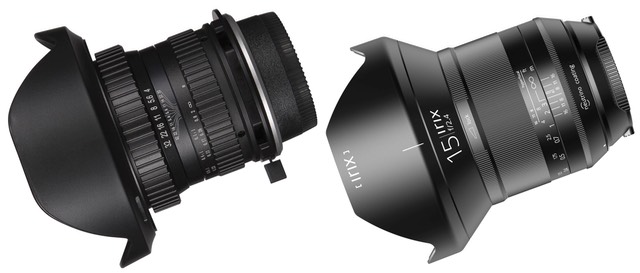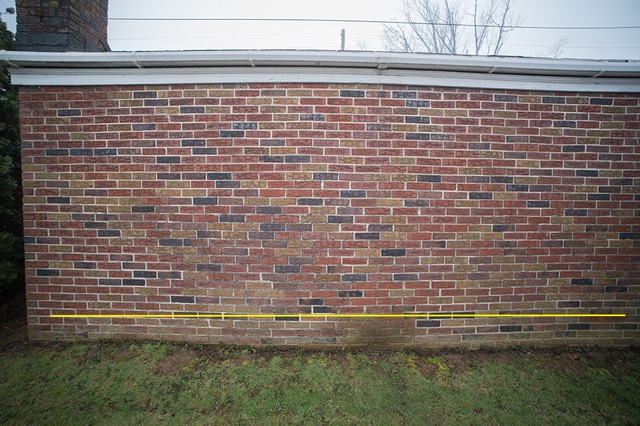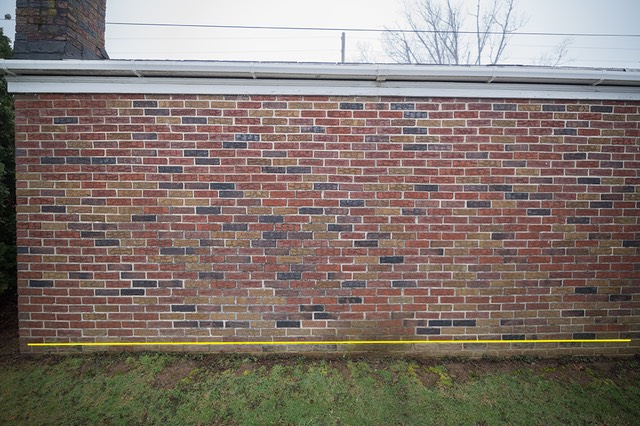
I get this question a lot: are the Laowa (left) and Irix (right) wide angle lenses any good?
Rather than doing an in-depth review, I'm going to do a quick run down of some brief experience with them. Both lenses come in a range of mounts (Canon, Nikon, Sony, Pentax). The samples leant to me by B&H were tested on Nikon mount cameras.
The Laowa 15mm f/4 is a bit unique. It focuses down to 4.7" (12cm). That means you can essentially jam the perspective and get something in the foreground 1:1 with a huge depth cue to the rest of the frame.
This is a 12 element in 9 group optical design with a 14-blade aperture, so despite the US$500 price, there's some complexity in it that you might not be expecting. We've got four special glass elements, too. The lens has a 77mm front filter ring and comes with a petal lens hood. Weight is 410g, and the lens is relatively compact at 3.3 x 2.6" (84 x 65mm). DOF markings from f/5.6 to f/22 are shown, and the aperture is controlled by a front aperture ring (f/4 to f/32).
What you don't get is electrical contacts, which means cameras like the D7500 can't shoot with it. Construction is solid and the rings are smooth.
The Irix 15mm f/2.4 Blackstone is a really nice looking lens. Mine came in a small hard protective pouch, which was not expected. At US$575, it too features a complexity to the optics that you don't expect at this price range: 15 elements, 11 groups, 2 aspherical, 5 low refraction type elements, and a 9-blade rounded diaphragm. The lens has a 95mm front filter ring and removable petal hood, and is significantly bigger than the Laowa at 685g and 4.5 x 4" (114 x 100mm). The lens is marked with DOF for f/8, f/11, and f/16, plus it has hyperfocal marks for those apertures. The focus ring can also be locked, a nice touch, though it's a little odd how it's done. There's also a hard indent stop at infinity.
The Irix does have the electrical contacts and presents as an AI-P type lens to Nikon cameras, which means pretty everything should be able to use it.
Yeah, I know what you're waiting for: how are they in practice? First, the Laowa:

I've put a yellow line along one row of brick, but even without that I think you'll note the bow in the middle and the wave to the linearity. You might not be able to tell it from the compression and sample sizes here on the Web site (remember, graphics are resized by an unseen engine), but contrast is lower even in the center than the Irix, and the two extreme edges are less sharp, as well. Still, remarkably good performance.
The Laowa has some mustache distortion and despite the f/4 maximum aperture tends to be observably less sharp at the edges. But, of course, it was designed to take something up front and close (and probably near centered), so the edges aren't as important in that situation. I'd call the lens good to very good at f/8, but I found I really had to move to Live View to get it accurately focused on my D850 (hint: use Focus Peaking, and watch for maximization on the peak edges that are most important).
Next, the Irix:

I've again put a yellow line along a row that should be straight in this shot. It is. If you think you see distortions in linearity, you need to come out and inspect this wall: this is pretty much the way it really looks. The gutter runs downhill, not all the brick layers are perfectly straight, and so on. This is a D850, and bricks at far left and far right are very nicely detailed.
The Irix is marketed as having low linear distortion, and they're not kidding. You generally don't see bowing to lines. Even at f/2.4 the edges aren't bad, the center excellent. Stopped down to f/8 I found that this lens was very good to excellent side to side, something I wasn't expecting for the price. Again, focusing with a DSLR optical viewfinder can be less precise than you might want, so Live View is your friend.
The Irix has weather-sealing, something that some should consider when trying to choose between the lenses.
One other thing about that Irix: it's a really nice 22.5mm wide angle for DX shooters. While a bit heavy for a lens being used on DX bodies, this is a lens that Galen might have gravitated to. It's optically excellent on DX with very minimal distortion. I could see a D7500/D500 shooter using this lens even for indoor architecture.
Bottom Line
Get a Laowa 15mm f/4 if you really want to play with small close objects in environment shots. You can't do the kind of shot this Laowa accomplishes with pretty much anything else: the so-called diagonal fisheyes give too much linear distortion when used this way.
The Irix 15mm f/2.4 is going to appeal more to landscape and architectural photographers, particularly D850 users trying to max out their landscapes. Yet the fast aperture is going to entice event and other photographers, too. Be careful not to push too far into diffraction limited apertures and you'll be surprised at just how much detail this lens can pull out.
I worry a bit about quality control when prices are this low, not so much in the overall build quality—both these lenses seem excellent and solid there—rather in lens element alignments. So trust but verify*.
*Find a big flat surface with detail, put a mirror exactly at camera height and flat to the wall, align the camera in the center of the mirror, shoot, and look at the two extreme edges: they should be equally sharp/unsharp. Both lenses focus close enough that you don't need a stadium-sized wall to do this. Indeed, you can probably do this indoors.
Support this site by purchasing these lenses from the following advertiser:
